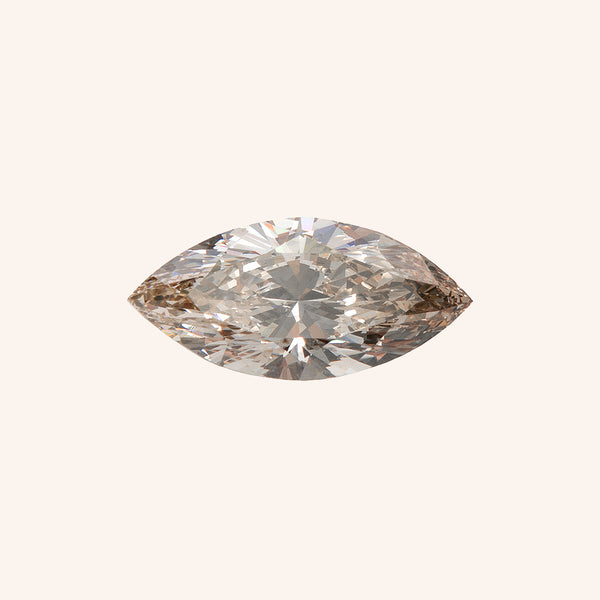

Mineral: Diamond
Colour: Various colours
Moh's Hardness: 10
Birthstone: April
Anniversary: 60th & 75th
Coloured diamonds are found in only 1 of every 10,000 white diamonds mined. Most of the world's supply of champagne diamonds comes from the Argyle mine in the East Kimberley region of Western Australia. Champagne diamonds are graded the same as a white diamond in regards to cut, clarity and carat. When it comes to colour they are graded from a C1 (pale golden colour) to a C7 (dark chocolate colour). In terms of their other qualities like hardness and refraction of light, they are on par with white diamonds and an excellent choice for their longevity in jewellery.
History
It was Jean-Baptiste Tavernier (1605-1689), a French precious stone merchant, who first brought coloured diamonds back to Western Europe.
Due to the De Beers monopoly and marketing of white diamonds, it is only since the 1970s and 1980s that a passionate number of gem dealers began to generate a new interest in coloured diamonds. The last decade has seen a significant rise in the demand for these beautiful gems and their popularity is increasing.
Care
Diamonds are highly recommended for all types of jewellery, especially for rings as they are the most resistant to wear over time. A diamond is an excellent choice for longevity but be aware that any stone can break if it is hit hard enough, even a diamond. Wear all jewellery with care and avoid exposure to abrasive materials and harsh chemicals.
To clean, soak your diamond piece in a dish of warm soapy water and use a soft toothbrush to gently brush away any built up residue. You can also use a jewellery cleaning cloth or professional jewellery cleaning products developed to be safe on diamonds. Professional jewellers use an ultrasonic machine to clean your diamonds; bring them in for an annual clean and check.





